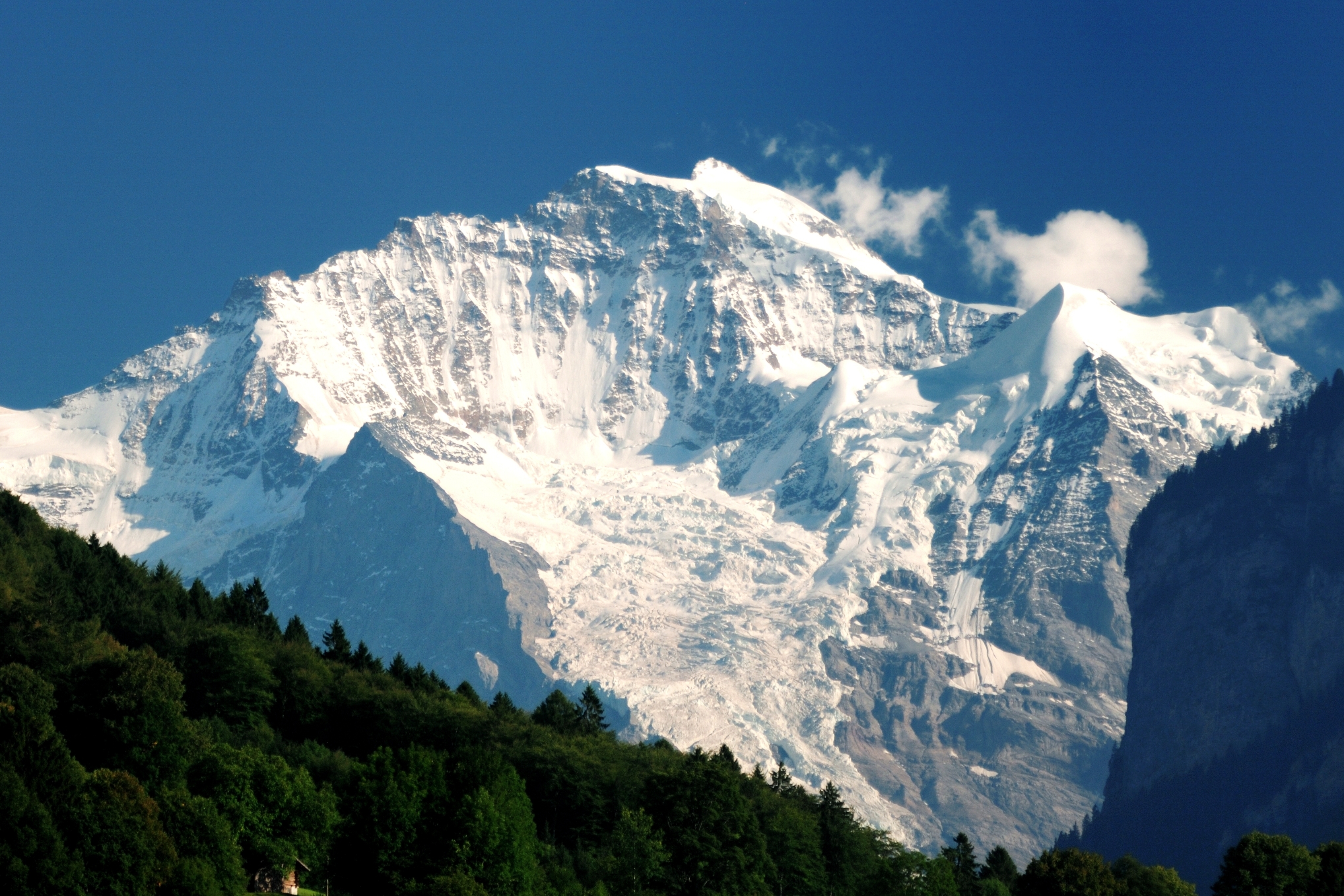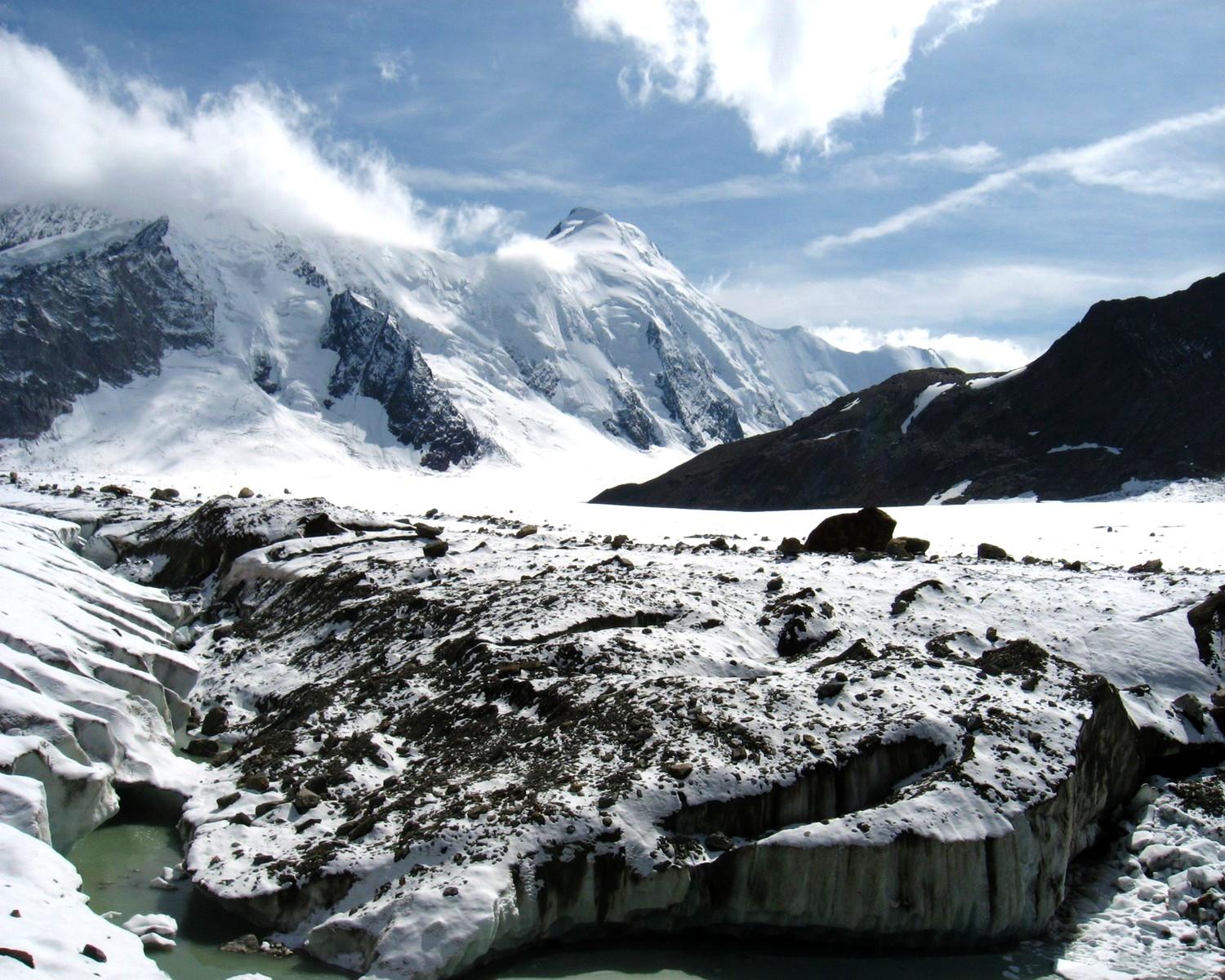|
Mönchsjoch Hut
The Mönchsjoch Hut (German: ''Mönchsjochhütte'') is a mountain hut located in the Bernese Alps in the canton of Valais in Switzerland. At an altitude of is one of the highest huts owned by the Swiss Alpine Club. The hut lies just above the Obers Mönchsjoch (3,627 m), between Mönch and Trugberg, on the upper Aletsch Glacier. It is used for the ascents of Jungfrau, Mönch and other peaks of the region. Access The hut is easily accessible by pedestrians from the Jungfraujoch railway station during the summer season by a secured piste on the glacier. However, during winter season it remains accessible only to mountaineers. It can also be accessed from the Konkordia Hut on the south. See also *List of buildings and structures above 3000 m in Switzerland This is a list of buildings and infrastructures above in Switzerland. As this height approximately corresponds to the level of the climatic snow line in the Alps, infrastructures located above it are generally subject to ha ... [...More Info...] [...Related Items...] OR: [Wikipedia] [Google] [Baidu] |
Trugberg
The Trugberg is a mountain in the Bernese Alps, located south of the Mönch in the canton of Valais, Switzerland. It is located above the Konkordiaplatz where the névé of the Jungfraufirn on the west side and the Ewigschneefeld on the east side converge to form the Aletsch Glacier. Debris accumulating on both sides of the mountain form one of the two important supraglacial moraines of the Aletsch Glacier. During their ascent of the Jungfrau in 1841, a group of explorers including Pierre Jean Édouard Desor and Louis Agassiz for a while thought that the Trugberg, hiding the Jungfrau from sight, was their destination. Eventually, they realized their error and decided to name the mountain ''Trugberg'', meaning ''Deceitful Mountain''. www.swissworld.org. Retrieved 2010-04-05 The Trugberg ... [...More Info...] [...Related Items...] OR: [Wikipedia] [Google] [Baidu] |
List Of Buildings And Structures Above 3000 M In Switzerland
This is a list of buildings and infrastructures above in Switzerland. As this height approximately corresponds to the level of the climatic snow line in the Alps, infrastructures located above it are generally subject to harsh weather conditions and are more difficult to build. This list also includes structures located precisely on the Italian border (*) that could be partially in Switzerland. List See also *List of highest railway stations in Switzerland *List of mountains of Switzerland above 3000 m *List of mountain huts in the Alps References *Swisstopo Swisstopo is the official name for the Swiss Federal Office of Topography (in German language, German: ''Bundesamt für Landestopografie''; French language, French: ''Office fédéral de topographie''; Italian language, Italian: ''Ufficio fed ... topographic maps {{reflist * Mountaineering in Switzerland ... [...More Info...] [...Related Items...] OR: [Wikipedia] [Google] [Baidu] |
Konkordia Hut
The Konkordia Hut (German: ''Konkordiahütte'') is a mountain hut of the Swiss Alpine Club, located north of Fieschertal in the canton of Valais. The hut lies above Konkordiaplatz, the point of convergence of several glaciers in the great Aletsch Glacier system of the Bernese Alps. It is located at a height of 2,850 metres above sea level, at the foot of the Fülbärg. Access Because of its location, the hut is long way from villages (6 hours from Fiescheralp, 10 hours from Fafleralp). The shortest way starts at the Jungfraujoch railway station (4 hours). All access routes are via the Aletsch Glacier. The hut lies approximately 150 metres above the level of the ice. The hut can be reached by stairs or via an unsecured steep path from the level of ice. References *Swisstopo Swisstopo is the official name for the Swiss Federal Office of Topography (in German language, German: ''Bundesamt für Landestopografie''; French language, French: ''Office fédéral de topographie' ... [...More Info...] [...Related Items...] OR: [Wikipedia] [Google] [Baidu] |
Piste
A ''piste'' () is a marked ski run or path down a mountain for snow skiing, snowboarding, or other mountain sports. This European term is FrenchEnglish language ''Fédération Internationale de Ski'' (FIS) website ("trail", "track") and synonymous with 'trail', 'slope', or 'run' in North America. The word is pronounced using a long "e" sound so that it rhymes with "beast". North Americans employ its common European antonym, 'off piste', to describe , especially when referring to skiing outside officially approved areas of a |
Jungfraujoch
The Jungfraujoch (German: lit. "maiden saddle") is a saddle connecting two major 4000ers of the Bernese Alps: the Jungfrau and the Mönch. It lies at an elevation of above sea level and is directly overlooked by the rocky prominence of the Sphinx. The Jungfraujoch is a glacier saddle, on the upper snows of the Aletsch Glacier, and part of the Jungfrau-Aletsch area, situated on the boundary between the cantons of Bern and Valais, halfway between Interlaken and Fiesch. Since 1912, the Jungfraujoch has been accessible to tourists by the Jungfrau line, a railway from Interlaken and Kleine Scheidegg, running partly underground through a tunnel through the Eiger and Mönch. The Jungfraujoch railway station, at an elevation of is the highest in Europe. It lies east of the saddle, below the Sphinx station, and is connected to the Top of Europe building, which includes several panoramic restaurants, shops, exhibitions, and a post office. Several tunnels lead outside, where secured hiki ... [...More Info...] [...Related Items...] OR: [Wikipedia] [Google] [Baidu] |
Jungfrau
The Jungfrau ( "maiden, virgin"), at is one of the main summits of the Bernese Alps, located between the northern canton of Bern and the southern canton of Valais, halfway between Interlaken and Fiesch. Together with the Eiger and Mönch, the Jungfrau forms a massive wall of mountains overlooking the Bernese Oberland and the Swiss Plateau, one of the most distinctive sights of the Swiss Alps. The summit was first reached on August 3, 1811, by the Meyer brothers of Aarau and two chamois hunters from Valais. The ascent followed a long expedition over the glaciers and high passes of the Bernese Alps. It was not until 1865 that a more direct route on the northern side was opened. The construction of the Jungfrau Railway in the early 20th century, which connects Kleine Scheidegg to the Jungfraujoch, the saddle between the Mönch and the Jungfrau, made the area one of the most-visited places in the Alps. Along with the Aletsch Glacier to the south, the Jungfrau is part of the Jungf ... [...More Info...] [...Related Items...] OR: [Wikipedia] [Google] [Baidu] |
Aletsch Glacier
The Aletsch Glacier (german: Aletschgletscher, ) or Great Aletsch Glacier () is the largest glacier in the Alps. It has a length of about (2014), has about a volume of (2011), and covers about (2011) in the eastern Bernese Alps in the Swiss canton of Valais. The Aletsch Glacier is composed of four smaller glaciers converging at Konkordiaplatz, where its thickness was measured by the ETH to be still near . It then continues towards the valley before giving birth to the Massa. The Aletsch Glacier is – like most glaciers in the world today – a retreating glacier. As of 2016, since 1980 it lost of its length, since 1870 , and lost also more than of its thickness. The whole area, including other glaciers is part of the Protected Area, which was declared a UNESCO World Heritage Site in 2001. Geography The Aletsch Glacier is one of the many glaciers located between the cantons of Bern and Valais on the Bernese Alps located east of the Gemmi Pass. The whole area is consider ... [...More Info...] [...Related Items...] OR: [Wikipedia] [Google] [Baidu] |
Mönch
The Mönch (, German: "monk") at is a mountain in the Bernese Alps, in Switzerland. Together with the Eiger and the Jungfrau, it forms a highly recognisable group of mountains, visible from far away. The Mönch lies on the border between the cantons of Valais and Canton of Bern, Bern, and forms part of a mountain ridge between the Jungfrau and Jungfraujoch to the west, and the Eiger to the east. It is west of Mönchsjoch, a pass at , Mönchsjoch Hut, and north of the Jungfraufirn and Ewigschneefäld, two affluents of the Great Aletsch Glacier. The north side of the Mönch forms a step wall above the Lauterbrunnen valley. The Jungfrau railway tunnel runs right under the summit, at an elevation of approximately . The summit was first climbed on 15 August 1857 by Christian Almer, Christian Kaufmann (1831-1861), Ulrich Kaufmann and Sigismund Porges. Gallery Image:Moench 2348.jpg, A view of the Mönch taken from the Jungfraujoch Image:Männlichen01.jpg, Panorama from Männlichen: ... [...More Info...] [...Related Items...] OR: [Wikipedia] [Google] [Baidu] |
German Language
German ( ) is a West Germanic languages, West Germanic language mainly spoken in Central Europe. It is the most widely spoken and Official language, official or co-official language in Germany, Austria, Switzerland, Liechtenstein, and the Italy, Italian province of South Tyrol. It is also a co-official language of Luxembourg and German-speaking Community of Belgium, Belgium, as well as a national language in Namibia. Outside Germany, it is also spoken by German communities in France (Bas-Rhin), Czech Republic (North Bohemia), Poland (Upper Silesia), Slovakia (Bratislava Region), and Hungary (Sopron). German is most similar to other languages within the West Germanic language branch, including Afrikaans, Dutch language, Dutch, English language, English, the Frisian languages, Low German, Luxembourgish, Scots language, Scots, and Yiddish. It also contains close similarities in vocabulary to some languages in the North Germanic languages, North Germanic group, such as Danish lan ... [...More Info...] [...Related Items...] OR: [Wikipedia] [Google] [Baidu] |
Swiss Alpine Club
The Swiss Alpine Club (german: Schweizer Alpen-Club, french: Club Alpin Suisse, it, Club Alpino Svizzero, rm, Club Alpin Svizzer) is the largest mountaineering club in Switzerland. It was founded in 1863 in Olten and it is now composed of 111 sections with 160,000 members (2020). These include the Association of British Members of the Swiss Alpine Club. History The Swiss Alpine Club was the first Alpine club founded in continental Europe after the foundation of the Alpine Club (1857) in London. One of the founders and the first president of the Club was Dr. Melchior Ulrich; other members were Gottlieb Samuel Studer and Dr. Simler. The inaugural meeting was held in Olten. With the increasing number of climbers, steps had to be taken to make the approach to the mountains a little less complicated and exhausting. Until mountain huts were built, there had been no choice for the climbers other than sleeping in the highest chalets or in a Bivouac shelter under some overhanging ro ... [...More Info...] [...Related Items...] OR: [Wikipedia] [Google] [Baidu] |
Switzerland
). Swiss law does not designate a ''capital'' as such, but the federal parliament and government are installed in Bern, while other federal institutions, such as the federal courts, are in other cities (Bellinzona, Lausanne, Luzern, Neuchâtel, St. Gallen a.o.). , coordinates = , largest_city = Zürich , official_languages = , englishmotto = "One for all, all for one" , religion_year = 2020 , religion_ref = , religion = , demonym = , german: Schweizer/Schweizerin, french: Suisse/Suissesse, it, svizzero/svizzera or , rm, Svizzer/Svizra , government_type = Federalism, Federal assembly-independent Directorial system, directorial republic with elements of a direct democracy , leader_title1 = Federal Council (Switzerland), Federal Council , leader_name1 = , leader_title2 = , leader_name2 = Walter Thurnherr , legislature = Fe ... [...More Info...] [...Related Items...] OR: [Wikipedia] [Google] [Baidu] |






